Compacting soil is an essential process in construction, landscaping, and other earthworks projects. It helps to increase soil density, improve stability, and reduce settling over time.
While many techniques exist for compacting soil, one effective method involves the use of water. This technique is particularly useful for compacting soils with a high clay content, which can be challenging to compact using other methods.
This guide will explore the steps involved in compacting soil with water, including the tools and materials needed and the important safety considerations.
Does Water Help Compact Soil?
When you buy cereal, do you ever see the warning label “Contents may settle after shipping?”
The cereal pieces do not align perfectly when the bag is filled at the factory, creating air gaps.
After bouncing around in the back of a truck, the contents shift, falling into place and leaving a large air space on top.
It is the same as the effect vibrations have on cereal caused by soaking soil. A lubricant like water works as both a carrier for dirt particles and a lubricant itself.
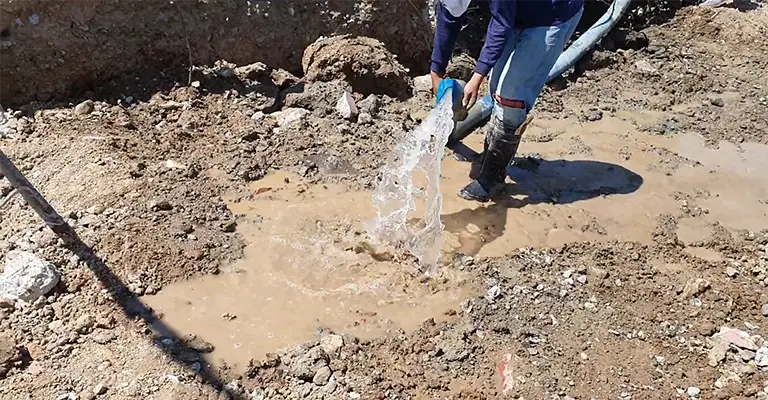
Gravity pulls these loose particles downward as the water drains from the soil, filling in the gaps left by the water.
Follow These Steps To Compact Soil With A Water Hose
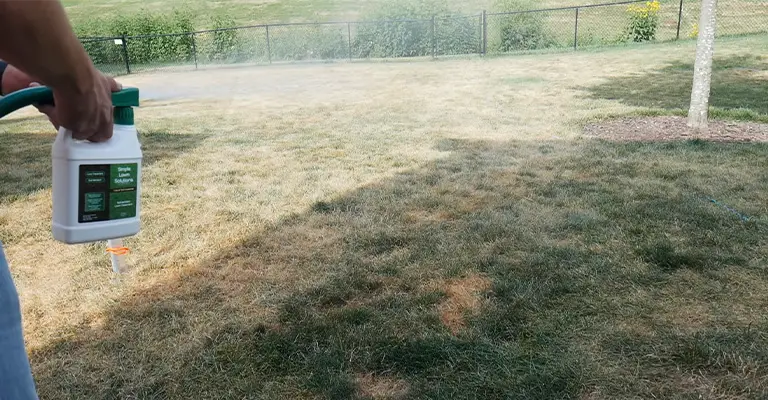
The porosity of soil refers to the open pores and open spaces within the soil particles. Compacted soil has low soil porosity.
In some soils, compaction is necessary to provide contact between seeds and roots, which is essential for plant growth. When you use water, the pore space between the soil particles is filled, and the soil is settled.
Water aids in compacting the soil when using specially designed tools to pack the soil to prevent paver stone patios and edging from shifting.
Things You Will Need
- Broom rake
- Bow rake
- Garden hose
- Spray nozzle
- Sprinkler
- Soaker hose
- Lawn roller
- Hand tamper
Step 1:
Rake the soil flat and smooth, using a broom or bow rake, as well as the back of the rake. Make sure the soil is free of rocks and other garden debris as you work.
Step 2:
Simply mist or trickle water onto the soil just until the water begins to pool on the surface. Perforated soaker hoses can be laid on the ground or used with a garden hose with a low-pressure spray nozzle.
In low-pressure and drip irrigation systems, soil on the surface is moved with low-pressure water instead of draining into the ground.
Step 3:
Approximately one hour is required for the water to drain deep into the soil. Some settling should occur at this point.
Step 4:
Wait for the water to drain into the soil after the second watering. Once the water has pooled up on the surface, water the soil again. Until the soil is well compacted, and water no longer drains into the soil quickly, repeat the process.
Sandy soil drains more slowly since it has a lower porosity, so you must repeat the process more often. As a result of clay soil’s low porosity, you can achieve more excellent compaction.
Step 5:
Tamp the soil lightly with a hand tamper or lawn roller or rake it over with a roller. This step is only necessary when preparing the soil for a paver stone walkway if you want more excellent compaction than that achieved with water alone.
Water Vs. Mechanical Compaction Methods
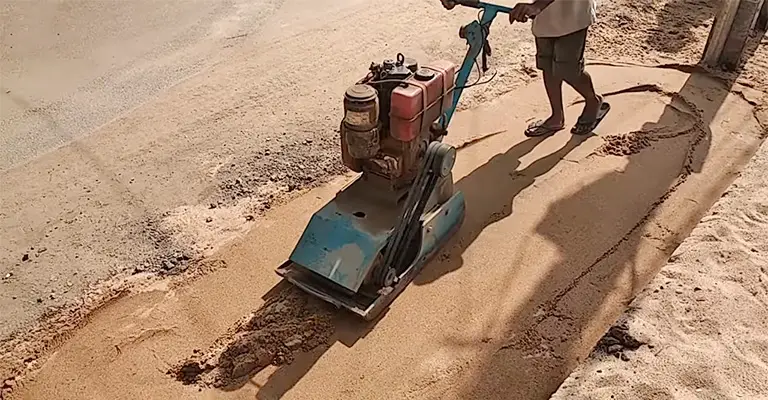
With a roller, hose, or rammer, you can compact soil mechanically. There are no spikes on a roller, like on a drum aerator. The soil will be crushed when you pull this heavy metal drum over your lawn.
A wheelbarrow loaded with heavy objects can be used if you’re in a bind. The flat hose is ideal for localized compaction. Compacting dirt close to the surface can be accomplished by smashing the flat side of the blade into the ground.
Saplings have usually supported this way when they are newly planted. A rammer has a flat base and is similar to a jackhammer. In addition to shaking the dirt beneath, the vibrating base also settles it.
Heavy-duty machines like these are usually used for major construction projects like foundation laying and driveway paving. The three methods have one thing in common: They all compact soil surfaces by brute force.
The surface won’t form a hard pan, and because there is less movement, it will be easier to achieve your target density. Although every mechanical method has its uses, water is safer and more accessible for most compaction jobs.
How To Compact Soil For Foundation Repair?
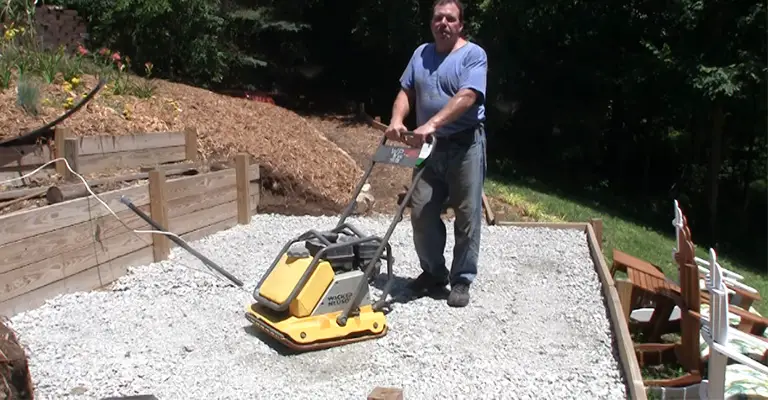
Leaving a soaker hose about 1 to 1-1/2 feet away from building walls will help compact soil around structures. You should limit water pressure to 25 psi for the best performance.
If your faucet does not have a pressure limiter, you may need to install one. It is a good idea to water your lawn two to three times a day for approximately 10 to 15 minutes.
Filling in gaps between outer walls may require more frequent treatments if the soil is already pulling away. Ensure that the soil is drained between treatments. You can undermine your foundation’s structure by using too much water.
Why Would I Need to Compact Soil?
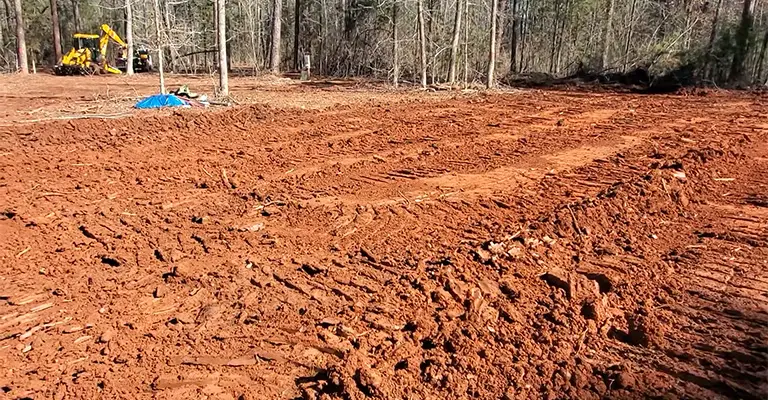
It is possible to need to compact soil for many different reasons. In the first instance, loose soil will not deliver the seed-to-soil contact needed to speed up germination, resulting in lower yields.
There is a significant problem with this in gardens that have just been tilled. Compressing soil with water increases this contact without causing the surface to become too hard to break through.
The soil might also need to be compacted due to foundational support. Compacting the soil is essential if you want to put anything on top of it. In this category, you will find pavers and patio support blocks.
Soil can expand and shrink across the year as a result of massive differences in precipitation between winter and summer.
The soil won’t suffer foundation damage if irrigated in the summer. You can keep the soil hydrated and maintain its structure. Typically, external walls and the soil separate due to shrinkage.
How To Pack Down Dirt With Hose Attachments?
Water sprayed at low pressure soaks the ground without eroding surface soil or forming hard pans. This low-pressure flow can be obtained from your outdoor spigots by using three tools:
Compaction can be accomplished using soaker hoses already on your garden plot. The application remains the same regardless of which tool you choose.
Ensure the soil is sopped gently until the water pools on the surface. Make sure to give the soil at least an hour to absorb the water before applying more water.
It will depend on the type of soil you have, how much water you’ll need, and how long it takes to water it between waterings.
As a result, clay soil drains more slowly and has a lower porosity from the start. It takes more effort to compact sandy soils because they have large open spaces, drains quickly, and require more effort to compact.
You can test soil depth by digging 6 inches deep with a trowel. Using the soil, you pulled out and crushed some in your hand. The soil is the right amount of moisture and compacted if a ball holds together and doesn’t leak water.
More water is necessary if the ball crumbles. If the ball drips water, the soil will take more time to drain.
Will My Soil Be Compacted After a Heavy Rain?
Raindrops compact surface dirt by mechanically compacting it, leaving a crust of soil up to 12 inches deep. Consequently, seedlings have a hard time emerging from the soil due to this layer that prevents drainage.
The soil is compacted evenly when low-pressure water is applied near the ground’s surface. Compacting garden soil this way can increase soil density without hardening the top layer.
Which Method Of Compacting Soil Is Cheapest?
Low-pressure water compacts soil evenly and increases soil density without creating a hard top layer. If you compact soil with water near the surface, you can make it more dense.
When Does Soil Naturally Compact?
Soil that has been disturbed or loosened typically settles and compacts over a period of 5 to 10 years.
The settling process can, however, be accelerated by consistent exposure to water. It is highly likely that concrete will settle if it has been installed on soil that has been severely disturbed in the past five to ten years.
Is It Necessary To Wet The Soil Before Compacting It?
To achieve proper compaction, your soil must have the right amount of moisture since water aids in sliding soil particles together.
When there is inadequate moisture, the soil will not be adequately compacted; if there is too much moisture, the soil will develop water-filled voids that will weaken its strength.
Does Standing Water Compact The Soil?
Standing water does not compact the soil. Instead, it loosens the soil and causes it to be more easily eroded. The soil needs to be properly compacted to increase its strength and stability.
A ponded area, however, causes more than stand loss, disease pressure, or decreased yield. It also causes gradual soil compaction.
How Much Water Does It Take To Compact Soil?
Depending on the soil type, moisture content, and compaction effort, water is required to compact soil.
Subtract 11% from the soil moisture content to calculate the moisture content required for soil compaction. Multiply the volume of soil with its density to calculate its weight.
Once you have the weight of the soil, you can calculate the amount of water required for compaction by multiplying the weight of the soil with the required moisture content and dividing it by 100.
Final Words
The best way to break up compacted soil is to use an aerator, which is widely used by homeowners, landscapers, and farmers. There are, however, some cases where soil may actually be too loose.
Poor seed growth and cracked foundations are some of the results of this. For firming up dirt, you can use items you probably have at hand, such as a garden hose.
You might achieve better results for paved surfaces if you tamp or roll soil after spraying it with water after each application.







